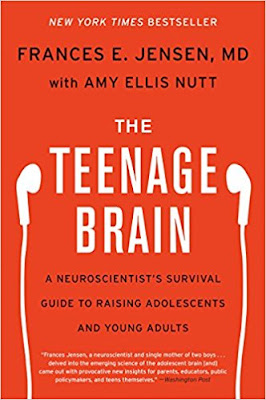Too Short for a Blog Post, Too Long for a Tweet 102
Here are two excerpts from a book I recently read, "The Teenage Brain: A Neuroscientist's Survival Guide to Raising Adolescents and Young Adults," by Frances Jensen:
And yet the brain of an adolescent is nothing short of a paradox. It has an overabundance of gray matter (the neurons that form the basic building blocks of the brain) and an undersupply of white matter (the connective wiring that helps information flow efficiently from one part of the brain to the other)—which is why the teenage brain is almost like a brand-new Ferrari: it’s primed and pumped, but it hasn’t been road tested yet. In other words, it’s all revved up but doesn’t quite know where to go.
So
here’s the paradox: Adolescence is a stage of development in which
teens have superb cognitive abilities and high rates of learning and
memory because they are still riding on the heightened synaptic
plasticity of childhood. These abilities give them a distinct advantage
over adults, but because they are so primed to learn, they are also
exceedingly vulnerable to learning the wrong things. How does this
happen? It all goes back to the brain’s craving for rewards, and the
fact that anything that is learned, good or bad, that stimulates the
production of dopamine is construed by the brain as a reward. This means
a little bit of stimulation to a teenage brain whose synapses are
firing all over the place leads to a craving for more stimulation that
can, in certain situations, result in a kind of overlearning. The more
commonly known name for this overlearning is addiction.
And yet the brain of an adolescent is nothing short of a paradox. It has an overabundance of gray matter (the neurons that form the basic building blocks of the brain) and an undersupply of white matter (the connective wiring that helps information flow efficiently from one part of the brain to the other)—which is why the teenage brain is almost like a brand-new Ferrari: it’s primed and pumped, but it hasn’t been road tested yet. In other words, it’s all revved up but doesn’t quite know where to go.

Comments